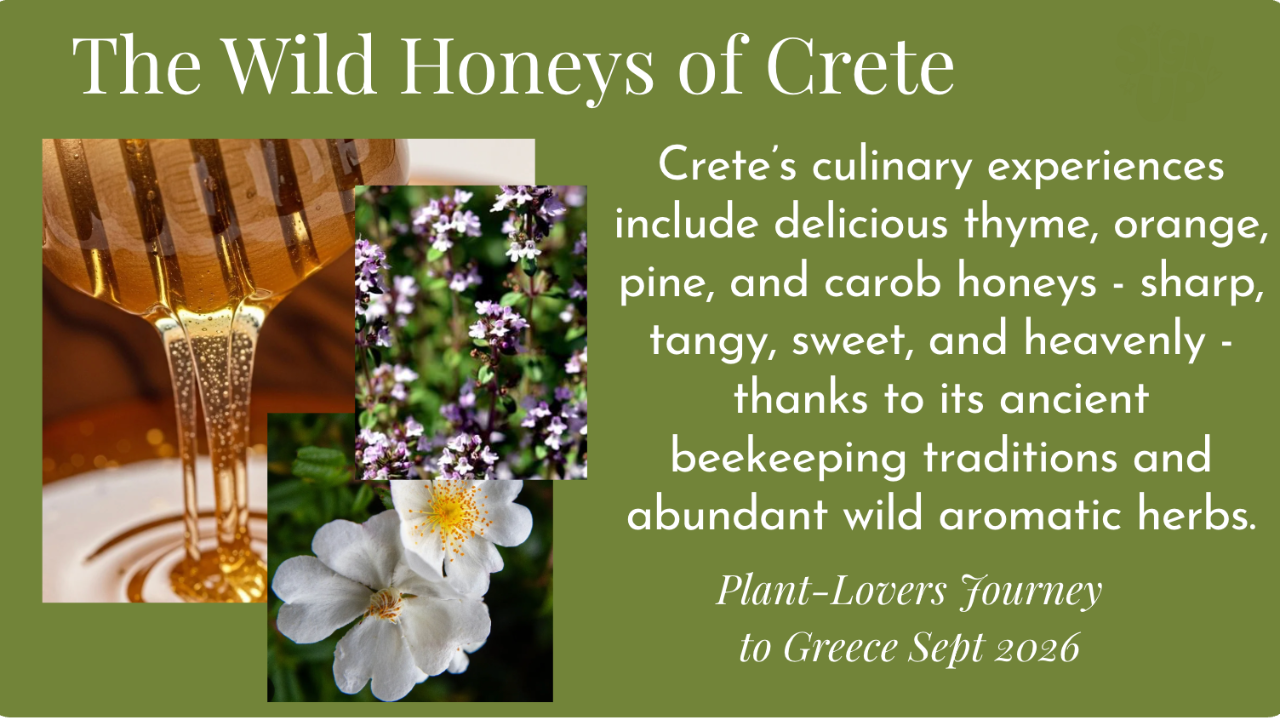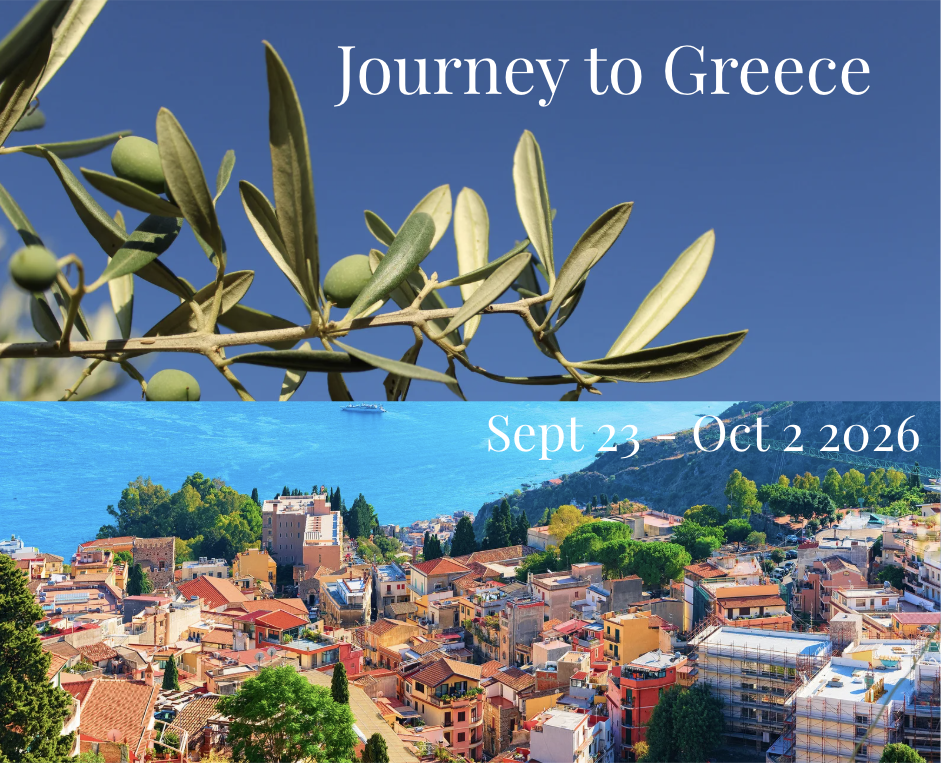Wild Honeys of Crete
Nov 13, 2025
Did you know that the magical island of Crete in Greece is known for its amazing varieties of honey?
Because of the luscious stands of wild thyme that grow across the region, thyme honey is very popular. Thyme’s heady aroma and pungent yet sweet flavor can be an ingredient in the Middle Eastern za’atar, and it’s a medicinal plant I use topically for wounds and for respiratory illness. Local Crete chefs often pair thyme honey with pine honey, which is made when honeybees forage the pollen and make honey from the forests of Crete.
(And yes, as we’ll discover on our adventure to Athens and Crete in September 2026, diverse Crete boasts not only Mediterranean beaches and cobblestone port towns, but also snow-capped mountains and arid desert-like plains.)
Aromatic Herbs of Crete
And of course, Crete is rich in a diversity of wild herbs, including rosemary, oregano, sage, and marjoram, and wild herb honey is a delicacy here. On our Greece: Myth and Beyond journey, we will visit the botanical gardens and explore the aromatic herbs of Crete along with the traditional foods and wines, including delicious desserts such as baklava (a favorite with those who appreciate honeys).

There’s also carob honey, made from the carob tree, with its molasses-like flavor and consistency. Carob is sometimes used as a chocolate substitute with a bit more bitterness; the honey is sometimes called “carob syrup,” or haroupomelo, and is used in a wide range of desserts and tangy confections.
Other forest or orchard trees supply divine-tasting honeys: the oak trees of Crete and the aromatic orange trees, with their heavenly, sweet-scented blossoms. All of these honeys are enjoyed in mouth-watering ways, from being drizzled over yogurt and pastries to basting meats and salads.
Figs and olives can benefit from samplings of local, aromatic-flower honeys, and honey often finds itself aboard cheese platters because it complements the rich, zesty and salty cheeses of Greece.
Bee-Keeping on Crete
Beekeeping is an ancient heritage on Crete, the 5th largest island in the Mediterranean. Beekeeping has been practiced since the Bronze Age and was a Minoan and Mycenean practice. Melissa means bee, and it’s also the Latin name of our beloved Lemon Balm herb.
Many beehives on Crete are made of clay or wicker, traditional ways to support healthy bee populations and collect honey.
Join me in Greece September 2026!
Our plant-lovers journey to Crete and Athens next September 23 (there are still a few spaces left!) will highlight the delicious cuisine of Greece, with visits to farmers, gardens, eateries and restaurants where we will sample the breadth of Mediterranean herbs, flavors and foods. Diverse and delicious honeys will be part of our culinary food-and-wine adventure, keeping it authentic and traditional.
We’ll stay in gorgeous hotels and a villa in the heart of Crete, making day trips to the lively port harbor towns and exploring the ancient ruins that make Athens famous: the Acropolis, Parthenon, and even the mysterious UNESCO world heritage site of Delphi.
I've led numerous trips abroad with plant-loving people, gardeners, herbalists, herb geeks like me, and others interested in exploring the world. To see testimonials from past participants, click here.
Join me on this once-in-a-lifetime trip to explore some of the best parts of Europe. Register here.











